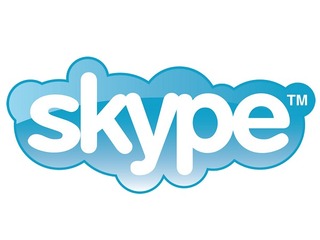How does Ginkgo Bioworks make money?
Ginkgo makes the majority of its money from the sale of its end-to-end COVID-19 testing services
Read more...
The video conferencing space is a pretty crowded one; the most prevalent service is probably Skype, which was bought by Microsoft for $8.5 billion in 2011, along with Google Hangouts and then standalone services like GoToMeeting.
Yet, so far, only one of those standalones has managed to make it onto the public market: Zoom, which had its IPO on Thursday, closing the day up 72 percent from its $36 IPO price while raising $356.8 million, valuing the company at $18 billion.
The company makes its money from sales of subscriptions to its platform, of which there are four tiers it currently offers.
The first is its free tier, which it calls Basic; that one comes with the ability to host up to 100 participants, an unlimited number of meetings and 40 minute limit on group meetings. the next level is the Pro plan, which costs $14.99 a month per host, also includes user management, admin feature controls, custom personal meeting IDs and 1GB of MP4 or M4A cloud recording.
The third plan is called Business and it costs $19.99 a month per host, with a minimum of 10 hosts. It includes dedicated phone support, an admin dashboard, a vanity URL, the option for on-premise deployment, managed domains, company branding and custom emails.
The most expensive plan is Enterprise, which costs $19.99 a month per host, with a minimum of 50 hosts. Features unlimited cloud storage, a dedicated customer success manager, executive business reviews and bundle discounts on Webinars and Zoom Rooms.
The three paid plans all come with the ability to add 100 participants, but that number can be increased for an additional free. On the Pro plan, 500 participants is $64.99 per month per host, while 1,000 is $104.99, while on the Business and Enterprise plans the cost is $69.99 or $109.99 per month per host.
For the fiscal year ending 2019, Zoom had revenue of $330.5 million, up 118 percent from $151.5 million 2018. That itself was up 149 percent from $60.8 million in 2017. In just two years Zoom has seen revenue grow by over 5x.
On top of that, the company is now seeing a profit; after losing $3.8 million in the fiscal year ending in 2018, it had a net income of $7.6 million over the last year.
Part of Zoom's model is getting free users to become paying customers, the company wrote in its S-1 filing with the SEC.
"We have a unique model that combines viral enthusiasm for our platform with a multipronged go-to-market strategy for optimal efficiency. Viral enthusiasm begins with our users as they experience our platform – it just works. This enthusiasm continues as meeting participants become paid hosts and as businesses of all sizes become our customers," it said.
"Our sales efforts funnel this viral demand into routes-to-market that are optimized for each customer opportunity, which can include our direct sales force, online channel, resellers and strategic partners. Our sales model allows us to efficiently turn a single non-paying user into a full enterprise deployment."
For the fiscal year that ended on January 31 of this year, more than half, 55 percent, of Zoom's 344 customers that contributed more than $100,000 of revenue started with at least one free host prior to subscribing. Those customers now make up 30 percent of the company's revenue.
Founded in 2011, Zoom had raised $160.5 million in funding from investors that included Sequoia Capital, Emergence, Horizons Ventures, Maven Ventures, AME Cloud Ventures, Qualcomm Ventures and GC Capital.
(Image source: zoom.us)
Ginkgo makes the majority of its money from the sale of its end-to-end COVID-19 testing services
Read more...GE Healthcare, which went public after spinning-off, makes most of its revenue from imaging products
Read more...The company makes most of its money through the sale of its Health Monitoring System
Read more...


